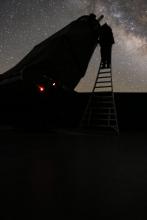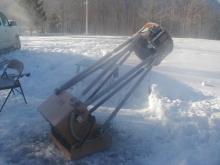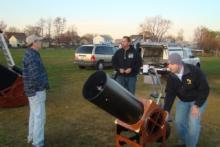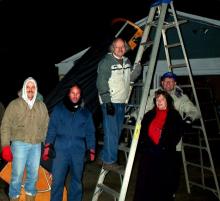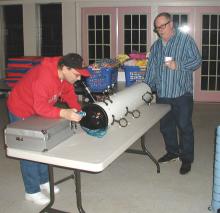Feed aggregator
Telescope detects unprecedented behavior from nearby magnetar
Captured by cutting-edge radio telescope technology, a chance reactivation of a magnetar -- the Universe's most powerful magnets -- has revealed an unexpectedly complex environment.
Neutron stars are key to understanding elusive dark matter
Scientists may be one step closer to unlocking one of the great mysteries of the universe after calculating that neutron stars might hold a key to helping us understand elusive dark matter.
CHEOPS detects a 'rainbow' on an exoplanet
The CHEOPS space telescope is providing new information on the mysterious exoplanet WASP-76b. This ultra-hot giant is characterized by an asymmetry between the amount of light observed on its eastern terminator -- the fictitious line that separates its night side from its day side -- and that observed on its western terminator. This peculiarity is thought to be due to a 'glory', a luminous phenomenon similar to a rainbow, which occurs if the light from the star -- the 'sun' around which the exoplanet orbits -- is reflected by clouds made up of a perfectly uniform substance. If this hypothesis is confirmed, this would be the first detection of this phenomenon outside our solar system.
Stellar collisions produce strange, zombie-like survivors
Densely packed, fast-moving stars at the Milky Way's center can collide with each other. New research uses simulations to explore the outcomes of these collisions. Some collisions are more like 'violent high fives' while others are full-on mergers.
NASA's Webb probes an extreme starburst galaxy
A team of astronomers has used NASA's James Webb Space Telescope to survey the starburst galaxy Messier 82 (M82). Located 12 million light-years away in the constellation Ursa Major, this galaxy is relatively compact in size but hosts a frenzy of star formation activity. For comparison, M82 is sprouting new stars 10 times faster than the Milky Way galaxy.
Unlocking supernova stardust secrets
New research has discovered a rare dust particle trapped in an ancient extra-terrestrial meteorite that was formed by a star other than our sun.
ALMA finds new molecular signposts in starburst galaxy
The ALMA radio telescope has detected more than 100 molecular species, including many indicative of different star formation and evolution processes, in a galaxy where stars are forming much more actively than in the Milky Way. This is far more molecules than were found in previous studies. Now the team will try to apply this knowledge to other galaxies.
Astronomers conduct first search for forming planets with new space telescope
Planets form in disks of dust and gas called protoplanetary disks that whirl around a central protostar during its final assembly.













